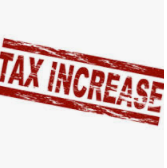
The advocate states in the current environment, it is critical for the IRS to direct its resources where they have the greatest positive effect on achieving tax compliance, particularly voluntary tax compliance. Over the long run, voluntary compliance is the least expensive form of compliance to maintain. It is also the least burdensome from the taxpayer’s perspective. Importantly, voluntary tax compliance is heavily linked to customer service and the customer experience.
The President’s Management Agenda for 2018 states: “Federal customers . . . deserve a customer experience that compares to – or exceeds – that of leading private sector organizations, yet most Federal services lag behind the private sector.” The Agenda identifies several Cross-Agency Priority (CAP) Goals, including CAP Goal 1: Modernize IT to Increase Productivity and Security, and CAP Goal 4: Improving Customer Experience with Federal Services. The Agenda notes that “the 2016 American Consumer [sic] Satisfaction Index and the 2017 Forrester Federal Customer Experience Index show that, on average, Government services lag nine percentage points behind the private sector.” How do the American Customer Satisfaction Index (ACSI) and the Forrester Federal Customer Experience Index assess the IRS’s customer service relative to other federal agencies and the private sector? The American Customer Satisfaction Index ranks the Treasury Department 12 out of 13 Federal Departments and says the Treasury Department’s score is effectively an IRS score because most citizens make use of Treasury services via the [IRS] tax-filing process.



















Recent Comments